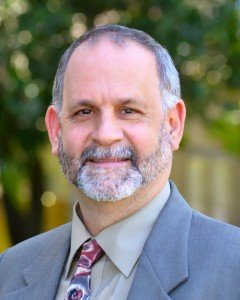Prop 30 on the November 8 ballot is the only statewide climate measure on the ballot, and it’s a good one. We urge a “yes” vote. The Climate Center supports Prop 30 because it is a genuine climate initiative that benefits all Californians and will help the state accelerate progress toward a climate-safe future.
We support Prop 30 because it will dedicate about $100 billion over 20 years to meaningful climate action, coming from those who can most afford it. Transportation is the number one source of climate pollution in California, and Prop 30 is the best chance we as voters have this year to do something about it.
Prop 30 would only raise taxes 1.75 percent on households earning more than $2 million per year in income. This is only about 35,000 households in the state. This infusion of dollars will build on what is already in the state budget and accelerate clean vehicles and wildfire management. Importantly, Prop 30 protects existing revenue for other programs and no revenue for schools, higher education, health care, or other programs is reduced by Prop 30.
Prop 30 originated with clean air and climate activists. We know because The Climate Center was among the groups that convened in 2020 to discuss the idea. Other supporters, like ride-sharing company Lyft, came on board later, but they don’t receive any of the revenue from Prop 30 directly. Instead, the rebates created from Prop 30 would be issued to individuals buying their own electric vehicles (EVs). Prop 30 will help people, especially in low-income and disadvantaged communities, afford clean vehicles and have improved access to charging infrastructure. Half of the dollars raised via Prop 30 will be placed into a fund specifically for low-income Californians.
So, what does Prop 30 do and where does the money raised go?
- 45 percent goes to support zero-emission vehicle (ZEV) adoption;
- 35 percent goes to acceleration of charging infrastructure across the state;
- 20 percent goes to avoid catastrophic wildfires.
Of the funding that does go to vehicles, over half will go to clean-emission medium and heavy-duty vehicles (semi-trucks, transit buses, school buses, farm equipment). Vehicles that have nothing to do with ride-hailing services.
Of the funding that does go to passenger vehicles (about 20 percent of the total funding of the measure), roughly only 1 percent is expected to go to Californians who drive for ride-hailing services. The rest will benefit Californians all over the state, including:
- Lower-income families who want to drive clean cars but can’t afford to;
- School districts that want to use clean buses to transport kids to school;
- Cities and counties for clean transit and other city/county-owned fleets;
- Californians who want to switch to a ZEV but won’t do so until they’re confident we have a convenient and affordable statewide charging network;
- Californians who need help protecting their homes from wildfire.
All of the funding from Prop 30 funding goes to three state agencies — the California Air Resources Board, the California Energy Commission, and CalFire — overseen by the governor. Over time, independent experts at those agencies will have the ability to shape the investment programs through a robust public process as technology, markets, and community needs evolve.
Prop 30 is also a great chance to unlock the potential of EVs to reduce the strain on our grid, avoid blackouts, and meet critical needs during grid disruptions and public safety power shut-offs. When not being driven, the combined energy in electric cars, trucks, and buses are literally “power-plants on wheels.”
Emerging vehicle-grid integration technologies can be used to meet demand during peak episodes in pre-agreements with vehicle owners, monetary compensation for a limited amount of power drawn from their batteries. These vehicles can also be used to power homes and businesses when the grid goes down, especially to provide power to medical centers, fire stations and food stores. California’s privately owned electric vehicle fleet already has a combined capacity larger than two Diablo Canyon power plants, and the combined battery capacity is growing every day.
On November 8, please join me in voting yes on Prop 30.

